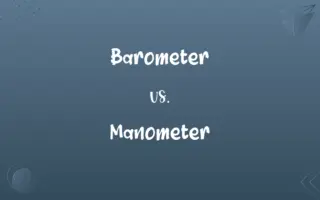UTP Cables vs. STP Cables: Know the Difference

By Dua Fatima & Hifza Nasir || Published on March 7, 2024
UTP (Unshielded Twisted Pair) cables are widely used for network cabling without additional shielding, offering cost-effectiveness & ease of installation. STP(Shielded Twisted Pair) cables include shielding to protect against electromagnetic interference.

Key Differences
UTP cables, lacking electromagnetic shielding, rely on the twisting of wire pairs to reduce electrical interference and crosstalk between cables in data communication. This simplicity allows for flexibility in installation and lower costs but may result in susceptibility to electromagnetic interference (EMI) and radio frequency interference (RFI) in certain environments. STP cables, by incorporating a conductive shield around the wire pairs, offer enhanced protection against EMI and RFI, ensuring more stable data transmission in interference-prone settings.
Dua Fatima
Mar 07, 2024
The construction of UTP cables makes them ideal for general office networking, residential internet connections, and applications where the risk of interference is minimal. Conversely, STP cables are preferred in industrial environments, data centers, and areas with heavy machinery or fluorescent lighting, where the potential for interference is higher.
Hifza Nasir
Mar 07, 2024
From an installation perspective, UTP cables are more user-friendly, requiring less care to avoid damaging the shielding and ensuring connections are properly grounded. STP cables, while offering superior protection against interference, demand meticulous installation practices to maintain the integrity of the shielding and effective grounding to prevent grounding loops.
Dua Fatima
Mar 07, 2024
The cost difference between UTP and STP cables is notable, with STP cables generally being more expensive due to their additional shielding and the higher quality materials used. This cost extends to maintenance and the need for specialized connectors to ensure proper grounding, making STP cabling a higher initial investment.
Hifza Nasir
Mar 07, 2024
UTP and STP cables can support various network speeds and standards, including Ethernet protocols up to 10Gbps or more, the choice between them hinges on the specific needs of the network environment, balancing cost, ease of installation, and the requirement for protection against electromagnetic interference.
Dua Fatima
Mar 07, 2024
ADVERTISEMENT
Comparison Chart
ADVERTISEMENT
UTP Cables and STP Cables Definitions
UTP Cables
Relies on twisted wire pairs to minimize interference.
Common in office Ethernet networks.
Hifza Nasir
Feb 26, 2024
STP Cables
Includes shielding to protect against interference.
Utilized in industrial network installations.
Dua Fatima
Feb 26, 2024
UTP Cables
Lacks electromagnetic shielding, reducing costs.
Used in home internet setups.
Dua Fatima
Feb 26, 2024
STP Cables
Generally more expensive than UTP cables.
The choice for high-quality, interference-free network cabling.
Hifza Nasir
Feb 26, 2024
UTP Cables
Cost-effective solution for many networking needs.
Chosen for budget-conscious network installations.
Hifza Nasir
Feb 26, 2024
ADVERTISEMENT
STP Cables
Demands careful installation to maintain effectiveness.
Used where signal integrity is paramount.
Shumaila Saeed
Feb 26, 2024
UTP Cables
More susceptible to noise and interference.
May experience signal degradation near heavy machinery.
Dua Fatima
Feb 26, 2024
STP Cables
Offers stable data transmission in noisy environments.
Ideal for networks in factories with lots of electrical equipment.
Hifza Nasir
Feb 26, 2024
UTP Cables
Flexible and easy to install in various environments.
Preferred for quick network expansions.
Dua Fatima
Feb 26, 2024
STP Cables
Requires grounding to prevent interference.
Grounding practices essential during installation.
Dua Fatima
Feb 26, 2024
Repeatedly Asked Queries
What is an STP cable?
STP (Shielded Twisted Pair) cable includes a conductive shield around its wires to protect against electromagnetic interference.
Dua Fatima
Mar 07, 2024
In what scenario is STP preferable?
STP is preferred in environments with high risk of electromagnetic interference, such as industrial areas or data centers.
Dua Fatima
Mar 07, 2024
What is a UTP cable?
UTP (Unshielded Twisted Pair) cable is a type of network cabling that lacks additional shielding, used for Ethernet and other telecommunications.
Hifza Nasir
Mar 07, 2024
Why choose UTP over STP?
UTP cables are more cost-effective and easier to install, suitable for environments with minimal electromagnetic interference.
Dua Fatima
Mar 07, 2024
How does shielding in STP cables affect installation?
The shielding in STP cables requires careful handling to avoid damage and proper grounding to be effective, making installation more complex.
Hifza Nasir
Mar 07, 2024
What impacts the cost difference between UTP and STP cables?
The additional materials and construction involved in STP cables for shielding and interference protection contribute to their higher cost.
Hifza Nasir
Mar 07, 2024
Can both UTP and STP support high-speed networks?
Yes, both can support high-speed Ethernet networks, but the choice depends on the environment's susceptibility to interference.
Hifza Nasir
Mar 07, 2024
Is there a performance difference in data transmission?
In environments with electromagnetic interference, STP cables can offer more stable and reliable data transmission than UTP cables.
Dua Fatima
Mar 07, 2024
Why is grounding important for STP cables?
Proper grounding is crucial for STP cables to effectively dissipate unwanted electrical signals and prevent interference.
Dua Fatima
Mar 07, 2024
How do I choose between UTP and STP for a new network installation?
Consider the environment's susceptibility to electromagnetic interference, budget constraints, and the need for flexible installation when choosing between UTP and STP.
Dua Fatima
Mar 07, 2024
Share this page
Link for your blog / website
HTML
Link to share via messenger
About Author
Written by
Dua FatimaCo-written by
Hifza Nasir







































































